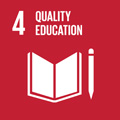- Docente: Stefano Russo
- Credits: 5
- Language: Italian
- Teaching Mode: Traditional lectures
- Campus: Bologna
- Corso: Second cycle degree programme (LM) in Health Professions of Prevention Sciences (cod. 8878)
-
from Oct 22, 2025 to Jan 21, 2026
Learning outcomes
The student acquires the ability to use computer tools as means of processing and communicating information.
Readings/Bibliography
MODULO I:
- A. Rossotti, Informatica Medica, 3 ediz., McGraw-Hill Education, Milano, 2025. Capp. 2 (Hardware) - 3 (Software) - 4 (Rete dati sanitarir) - 5 (Firme elettroniche e posta elettronica) -7 (Standard per l'integrazione) -12 (Cartella clinica elettronica e dossier sanitario) -13 (Fascicolo saniratio elettronico).
MODULO II:
- M. Mezzini, Informatica di base, Maggioli Editore, 2016. Cap. 5. (Archivi e tabelle).
- A. Clerici, Manuale di informatica per l'economia, Egea, Milano 2014. Cap. 4 (Convetti di base del foglio elettronico) - 5 (Creare un foglio di calcolo efficace) - 6 (Calcoli e funzioni in Microsoft Excel) - 7 (Analisi dei dati in Microsoft Excel).
MODULO III:
- M. Mezzini, Informatica di base, Maggioli Editore, 2016. Cap. 6 (Elaborazione dei testi).
MODULO IV:
- S. Allegrezza, Analisi e gestione delle basi di dati, Edizioni Simpro, 2010.
- A. Rossotti, Informatica Medica, McGraw-Hill Education, Milano, 2015. Cap. 9 (Basi di dati).
MODULO V:
- M. Mezzini, Informatica di base, Maggioli Editore, 2016. Cap. 8 (Collaborazione on-line)
- A. Clerici, Manuale di informatica per l'economia, Egea, Milano 2014. Cap. 8 (La condivisione delle informazioni e la collaborazione mediate dalle ICT)
Teaching methods
The course includes lectures and online with the aid of multimedia tools for some topics of Module I and practical laboratory activities to be carried out with word processing, calculation and database software on modules II, III, IV, V. There will be structured exercises on the various applications subject to the laboratory activity.
As concerns the teaching methods of this course unit, all students must attend Module 1, 2 [https://www.unibo.it/en/services-and-opportunities/health-and-assistance/health-and-safety/online-course-on-health-and-safety-in-study-and-internship-areas] on Health and Safety online.
Assessment methods
The assessment of the knowledge and skills acquired by the learner takes place through an end-of-course exam with a mark out of thirty.
The exam consists of two written tests (carried out on the computer) and a possible oral interview.
Written tests consist of multiple choice question, multiple choice, true or false statement, open answer, word association, personalized question and / or any exercises to be performed.
The first test aims to verify the basic knowledge acquired on basic IT concepts in the healthcare sector.
The second test aims to verify the skills acquired on the use of the software used in the laboratory activity.
The outcome of the exam (expressed with a mark out of thirty) will be determined overall by the evaluation of the two written tests and by the possible oral interview.
Teaching tools
Learning control questionnaires.
Collaborative online teaching tools to integrate traditional classroom teaching activities: Moodle platform, forum, chat, web conf .. wiki.
Use of contents (textual and multimedia teaching materials, videos, exercises) available on the delivery platform.
Online teachings for registered students.
Online Educational Resources: Sitography
Office hours
See the website of Stefano Russo
SDGs

This teaching activity contributes to the achievement of the Sustainable Development Goals of the UN 2030 Agenda.
